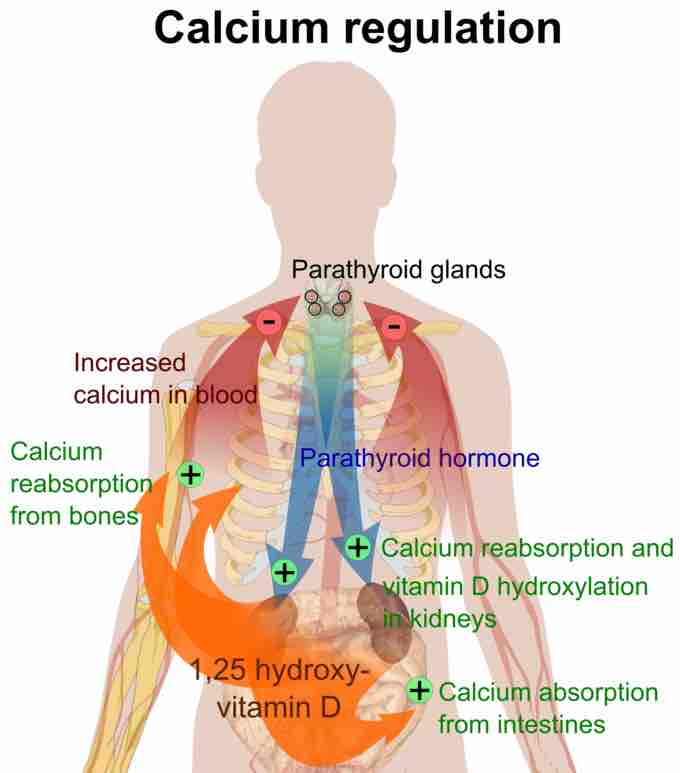Calcium is a very important electrolyte. Ninety-nine percent or more is deposited in bone and the remainder plays a vital role in nerve conduction, muscle contraction, hormone release and cell signalling.
The plasma concentration of Ca++ is 2.2 mmol/l and phosphate is 1.0 mmol/l. The solubility product of Ca and P is close to saturation in plasma. The concentration of Ca++ in the cytoplasm is < 10-6 mmol/l but the concentration of Ca++ in the cell is much higher as calcium is taken up (and is able to be released from) cell organelles.
In the typical Australian diet, there is about 1200 mg/d of calcium. Even if it was all soluble it is not all absorbed as it combines with phosphates in the intestinal secretions. In addition, absorption is regulated by active vitamin D and increased amounts of this increase Ca++ absorption.
Absorption is controlled by vitamin D while excretion is controlled by parathyroid hormones. However, the distribution from bone to plasma is controlled by both the parathyroid hormones and vitamin D. There is also a constant loss of calcium via the kidneys even if there is none in the diet. This excretion of calcium by the kidneys and its distribution between bone and the rest of the body is primarily controlled by parathyroid hormone.
Calcium in plasma exists in three forms: ionized, nonionized and protein bound. It is the ionized calcium concentration that is monitored by the parathyroid gland and if low, parathyroid hormone secretion is increased. This increases ionized calcium levels by increasing bone re-absorption, decreasing renal excretion and acting on the kidney to increase the rate of formation of active Vitamin D, thereby increasing gut absorption of calcium.
The usual amount of phosphate in the diet is about 1 g/d but not all is absorbed. Any excess is excreted by the kidney and this excretion is increased by the parathyroid hormone. This hormone also causes phosphate to leach out of bone. Plasma phosphate has no direct effect on parathyroid hormone secretion; however, if it is elevated it combines with Ca++, decreasing ionized Ca++ in plasma, and thereby increasing parathyroid hormone secretion.

Calcium Regulation
Parathyroid hormone regulates the levels of calcium in the blood.